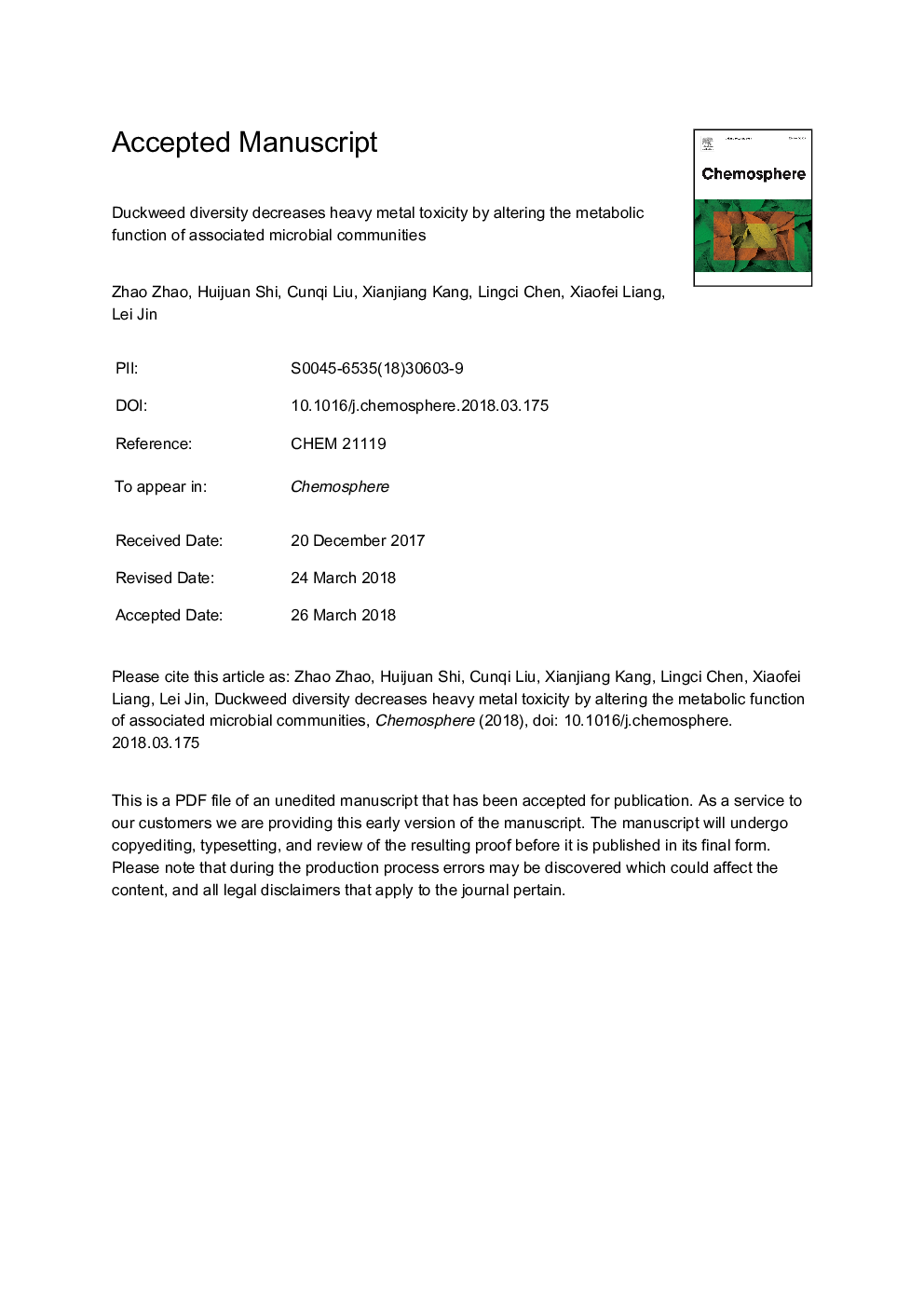| Article ID | Journal | Published Year | Pages | File Type |
|---|---|---|---|---|
| 8851242 | Chemosphere | 2018 | 35 Pages |
Abstract
Mono-cultured and mix-cultured duckweed species were investigated with respect to the function of their associated microbial communities in heavy metal contaminated wastewater. Results show that the carbon source utilization patterns of the L. aequinoctialis- and S. polyrhiza-associated microbial communities were different. The relationships between microbial activity, antioxidant enzyme activity (CAT, GSH, and SOD) and growth was positive and significant. The microbial activity of L. aequinoctialis and S. polyrhiza in mixture was higher than in monoculture in low and high heavy metal, respectively, thereby altering the utilization of specific carbon source types and increasing duckweed growth and antioxidant enzyme activity, when compared to the monocultured duckweed. Furthermore, results indicate that duckweed species in mixture are protected from damage through regulation of the associated bacterial communities.
Related Topics
Life Sciences
Environmental Science
Environmental Chemistry
Authors
Zhao Zhao, Huijuan Shi, Cunqi Liu, Xianjiang Kang, Lingci Chen, Xiaofei Liang, Lei Jin,
